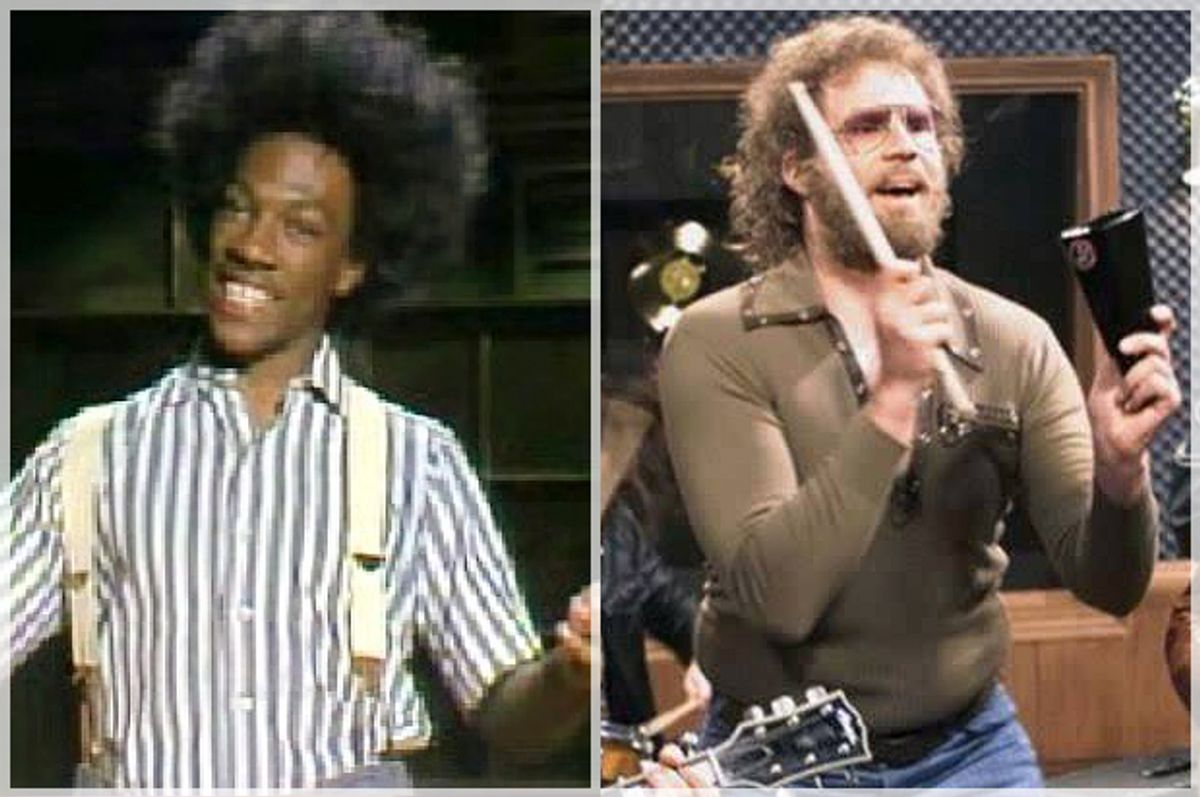There is something different about the grande dame of late-night variety shows. “Saturday Night Live” is the late-night variety show, in part because it’s the only late-night variety show on a major network. It’s both a position gained by default and one gained by endurance—“Saturday Night Live” is, inexplicably, still standing.
There are many patently obvious observations to make about “Saturday Night Live” on the occasion of its 40th anniversary. Forty years is a long time to be young and edgy, and the media landscape in particular has changed dramatically from 1975 to today. “Live” doesn’t mean what it used to; and the comedy landscape has diversified and exploded. The present incarnation of “Weekend Update” is the least sophisticated late-night news/comedy hybrid currently on-air; “SNL” sketches that make it online compete with pageviews for bits from Comedy Central’s “Key and Peele,” FX’s “It’s Always Sunny in Philadelphia,” and IFC’s “Comedy Bang! Bang!”—those other sketch (or sketch-y) shows with rabid fanbases.
As a result, “Saturday Night Live” is sort of a dinosaur, a relic, maybe a zombie—a show that stubbornly refuses to die, despite being past the point where it consistently has a heartbeat. It’s never going to be the show that matters the way its early years did, even though recent cast members have gone on to become stars and recent sketches have become instantly iconic. Lately, the show has felt like it is buoyed exclusively by its history, and the furor around former cast member Eddie Murphy returning to the show for its 40th anniversary special on Sunday night just further proves that. It will, no doubt, be fascinating. But it does also seem like a sad attempt to reclaim lost glory.
So here are the obvious conclusions. One: Here’s something that has lost the cultural relevance it once had. “Saturday Night Live” used to have the cream of America’s comedic crop; now it feels like it’s been hastily cast from a high school yearbook (Rolling Stone ranked most of this year’s new cast in the same below-average spot, deeming them mostly indistinguishable and mostly terrible). Two: Here’s something that has stayed mostly the same in a world that has mostly changed. Now that you can watch it all in bits and pieces on YouTube—or DVR it and watch it later—why even bother with 90 minutes of mediocre performance? And yes, the inevitable three: Here’s something that used to be better (though when “SNL” started to suck is hard to pin down). How many viewers, really, are turning on “SNL” confident that they are about to watch something really good? The quality of the show is inconsistent at best—not just over a season, but from sketch to sketch.
As much as I’d like to dismiss the show, though, it’s hard to. That’s the weird thing about relics—you can’t quite find a use for them, but you can’t quite throw them away, either. And even though I’m rarely around or awake to watch “SNL” live, knowing that it is out there, live in front of a studio audience, gives our culture, such as it is, a brief moment to be in the same place at the same time. As with AA meetings and church groups—most people don’t show up. But it’s there, a monument, of sorts, to our potential togetherness.
“Saturday Night Live”’s finest moments have a way of becoming instant history, meaning that we’re instantly nostalgic for them. And that’s because when we witness them, we sort of all feel like we were there for it, that we witnessed it firsthand. It doesn’t have to be good, honestly, because the point is that we showed up—the bad moments sometimes just give you more to talk about.
I’m of the opinion—as is Gary Susman at MovieFone—that “SNL” has gotten way, way too safe as it's aged, mostly because its star showrunner, talent scout and occasional on-screen presence Lorne Michaels has aged along with it. That’s left the show vulnerable to other shows that also rely on our sense of togetherness—“The Daily Show with Jon Stewart” being the best example. I’d love to see “Saturday Night Live” take a lot more risks, to get not-safe-for-work, to take advantage of its timeslot and its storied history to say something really provocative. This season has been almost dismal, saved mostly by talents like Kevin Hart, who carried his entire episode the way that Eddie Murphy did in his heyday on the show. To be sure, the show has taken some risks: Michaels has made a solid attempt to diversify the cast, for example, responding to Kenan Thompson and Jay Pharaoh’s call for more women of color on the show. But the material, as Susman observes, is typically family-friendly enough that it can be replayed during primetime.
Live television is so fundamentally exciting to watch—it’s a thrill knowing that it is happening now, and that you, as an audience member, are a part of it. But sports are a competition played on a field; awards shows are glorified industry events. It’s only stuff like “Saturday Night Live” that really talks back to its audience, that looks into the cameras and literally says “goodnight.” As it is now, “SNL” squanders something very precious—the opportunity to be on everyone’s TV, unvarnished, unedited and in a bad wig, making the rest of us laugh. Its very presence. If the show isn’t careful, even though it is the last/only live variety show we have, it may find itself replaced.
But I do hope that we are never without some version of “Saturday Night Live”—of the closest thing we have to all of America attending the same play. We have fascination and disdain for “SNL,” yes—at its inconsistency, its former glory, its cast members breaking character to start snickering during a bit. But at least we have it, together, and that is something.

Shares